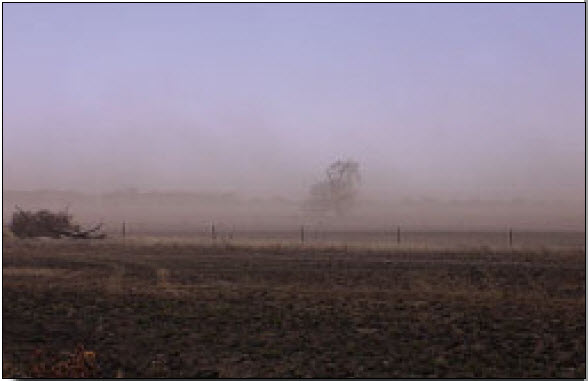- Wind erosion is of less concern in the Corangamite region than water erosion
- It is more prevalent in areas of lower rainfall and on areas that are devoid of protective vegetation
|
- Is more of a concern in cropping areas
- It can be controlled through management practices that reduce the amount of bare soil in the landscape
|
Understanding the problem
|
| Why is it important to me as a farmer?
|
- Soil erosion - by water or wind - is costly, with impacts on natural and built assets
including infrastructure, water quality, biodiversity and in some cases, human safety
- It occurs because soils have not been protected from the forces of wind, raindrop impact
or running water in sheets, rills, gullies or tunnels
- Erosion by wind is a lesser form of erosion in the Corangamite region in comparison to
water erosion
- Its major impact on farming includes the loss of valuable topsoil containing nutrients
|
- The top 10cm of most soils is particularly rich and contains most of the soil'snutrients,
plant roots and living organisms (bacteria, fungi, protozoa, nematodes, earthworms and
other soil animals). It is this part of the soil profile that is particularly at risk to erosion
- Studies in Australia have revealed that the wind-blown fraction contained 16 times as
much nitrogen, and twice the cation exchange and water-holding capacity of the original
soil (Young & Young 2001). Therefore, wind erosion has the potential to threaten
agricultural production due to the removal of fertile topsoil
|
- Wind erosion occurs where wind has direct access to bare dry soil and causes soil
detachment and removal. Fine material can be transported long distances, where
coarser material moves only by bouncing and rolling
- Wind erosion is not normally as serious as water erosion but there are occurrences
where it is more severe than the worst water erosion. Severe and damaging wind
erosion is usually confined to arid and semi-arid climates but can also occur in humid
areas
- There are three main factors affecting the incidence of wind erosion:
- Soil condition - The physical nature of the soil will affect the ease with which
particles are dislodged; but by far more important than this is the fact that only dry
soil blows. Any soil will be unmoved by wind while its surface is moist.
|
- Rainfall - Wind erosion is more frequent where the mean rainfall is low. As a
rough guide, areas most affected are those with less than 300mm, and those with
higher rainfall but long dry periods
- Vegetation - Soil is least vulnerable to wind erosion when well vegetated. The
vegetation physically prevents the wind coming into direct contact with the soil. In
the same way, a good cover of vegetation prevents splash erosion by water
|
| How to recognise it in the paddock
|

Figure 1 : Wind erosion in a fallowed paddock. - Source: CCMA Soil Health Training Manual (2008)
|
- In the Corangamite catchment the soils most vulnerable to wind erosion are those on
high hill tops that have been overgrazed or used as stock camps and are devoid of
protective vegetation. Other soils are light sandy soils along the coast
- Wind erosion is mostly seen across the Basalt Plains, the Central Highlands and at
points along the coastline
- Wind erosion generally occurs on fallowed areas in cropping country
|
| What is the best practice?
|
- Management principles will vary depending on the nature of the farming enterprise with
but overall, the need is to reduce wind speed at ground level and maintain ground cover
|
|
| How can you achieve this?
|
- Generally, controls include the reduction of bare soil through reduced cultivation, stubble
retention and minimisation of stock damage to vegetation and soil surfaces
- In addition it is recommended that organic matter be maximised on soil surface through
strategic crop rotations and grazing management
|
- Management options to reduce wind speed at ground level:
- Increase friction by planting a protective cover of vegetation
- Ripping at right angles to wind direction
- Erect barriers to raise the height of wind velocity above ground level e.g. filter
barriers, rye corn
- Planting of hedge rows at right angles to wind direction
|
Other related questions in the Brown Book
|
|
Brown Book content has been based on published information listed in the Resources and References sections below
|
- Soil Erosion Training Manual. Department of Primary Industries, Victoria on behalf of the
on behalf of the Corangamite Catchment Management Authority (2008).
- Clarkson T, Department of Primary Industries on behalf of the Corangamite Catchment
Management Authority (2007).Corangamite Soil Health Strategy 2007. Corangamite
Catchment Management Authority. Colac, Victoria.
|
|
|